RUPA-PRATIRUPA – MAN & MASK
The International Festival of Mask, Exhibition and Seminar was organised in New Delhi to commemorate the 50th anniversary of India’s Independence. The festival was a joint venture by the Indian Council of Cultural Relations, Sangeet Natak Akademi, National School of Drama, and the Indira Gandhi National Centre for the Arts
he five previous exhibitions organised by the IGNCA on Space (Kham), Time (Kala), Form (Akara), The Five elements (Prakriti), and Cosmic Order and Cycle of Seasons (Rtu-Ritu), focussed on the perennial processes of the universe. The next series of IGNCA exhibitions will explore the Person/ Self. Masks is the first in this seris.
Masks are the earliest creation of humans to establish a relationship with, as also replicate and re-create, the outer phenomenal world and the inner person. This is the first exhibition in the series. Masks and their manifold forms of guises are a very significant mode of cultural expression. This is one of the many ways through which cultures have given voice to their powerful cognitions and most subtle emotions, to define their inner and outer realities. In modern urban societies, masks have been devalued and generally considered to be a cosmetic disguise, rarely used on the stage and often deprecated in metaphors of everyday speech. Whereas, in ancient cultures, the mask is regarded as an instrument of revelations, giving form to the formless and the ineffable, and building a bridge between the mundane world of everyday experience and the ‘other’ supersensible domain of gods, sacred entities, invisible powers of nature, and ancestral presences.
|
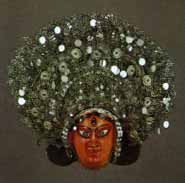
|
In this exhibition, the mask was not being viewed as an isolated object, but is explored in relation to the multivalent concept of the self/Purusha; that is, mask in the context of cultural process, framed in the past, present, and future, and mask as metaphor for understanding and re-evaluating personal and cultural histories. The exhibition presents a wide range of masks selected from the IGNCA’s permanent collection from twenty-two countries. The exhibition, divided into seven sections, takes us through themes of the natural forces, emotions, narrative, the social world, celebration, and ritual. These themes, while they knit together universal ideas pertaining to masks, also introduce us to the spectacular differences in their artistic expression.
|
| MASKS ACROSS THE WORLD
This section presents the worldwide diffusion, the antiquity, and the continuity of masks across nine regions of the world: South Asia; the Himalayan Range and Central Asia; East Asia; South-east Asia; Africa; Oceania and Caribbean and South America; and Northern America and the Arctic.
|
| NATURAL POWERS
Man’s perception of the phenomenal world which comprises the vegetal, animal, terrestrial, and celestial world manifests in a variety of masks. Some are purely imitiative or representational, assume a symbolic form. Masks linked to the natural powers serve the community to strike a harmonious balance with the forces of nature and the spirit world. |
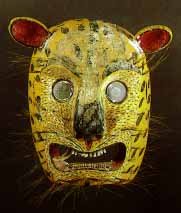
|
|

|
EMOTIONS
This section displays the range of emotional states that lie in the hidden recesses of our psyche, and which are made visible through a variety of masks. Regardless of the cultures they come from, masks convey the essential emotions.
|
| NARRATIVE
The thematic content of masked performances are drawn from the vast corpus of myths and ancient legends. Most popular among these are the age-old myths of the Ramayana and the Mahabharata. A vast variety of specific forms and styles have evolved in different regions in India. Individual mask makers and directors have created their own genres. This section includes the theme of Shakti, as reflected in the personification of goddess Durga; the Ramayana in India and Southeast Asia; the Krishnattam of Kerala based on legends from the Bhagavata Purana; Sahi Yatra from Orissa; Christian masks depicting the birth of Christ in the Pastorela from Mexico; ancient Greek Drama; the Buddhist legend of the guru Padmasambhava, popular in Tibet, Bhutan, Sikkim and Ladakh; and contemporary interpretations on Mahatma Gandhi. |
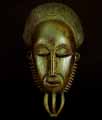
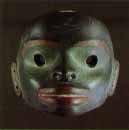
|
|

|
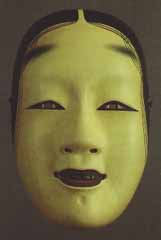
|
| SOCIAL WORLD
The mask is a very potent vehicle of popular and sophisticated theatrical form. Themes can range from exchanges between people situated in a socio-cultural context, human and social interaction often framed within a context in legends from the past. More often, they include satiric comments on social caricatures and comic figures who parody the austere power of authority.
|
| CELEBRATIONS
Masked ceremonies are always held at specific times: at the beginning or end of the year, according to the dates calculated by the various ancient calendar systems, at the beginning or end of the cycle of seasons. Masked ceremonies played a key role in harnessing the world of mystery and threat. All over continental Europe, from the Balkans to England and into the Scandinavian countries, in Latin America, India, China and Southeast Asia, seasonal masked processions are a common feature. The collective celebration creates a neutral space where culturally constructed identities disappear.
|

|
|

|
RITUAL
Masks are used a revelatory devices to connect the seen with the unseen, or as mirrors of the cosmic dimension of life. They give a concrete form to the formless and reach out to a realm beyond the immediate. Masks have different uses in the ritual context. Masks are also widely used in initiation rites, life cycle ceremonies and in rites of exorcism and ritual healing, as in the Suniya-yakuma ritual in Sri Lanka.
|
[ Newsletter | List of Newsletter ]
















